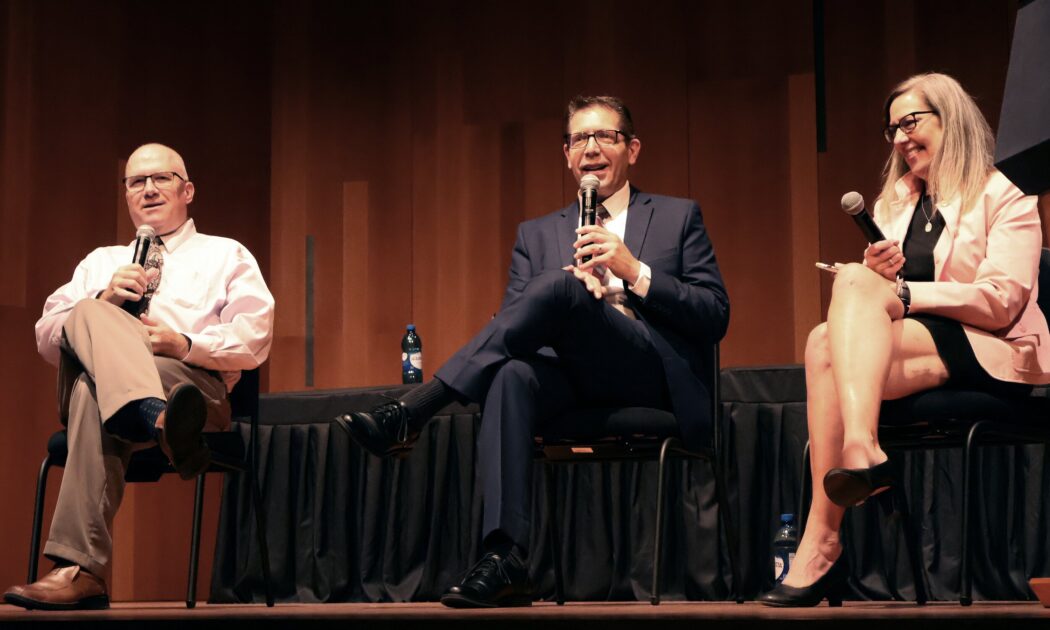Utah Court of Appeals hears cases on USU campus
Utah State University’s Russell/Wanlass Performance Hall was full the morning of Sept. 20 as the Utah Court of Appeals held cases regarding trusts and property disputes.
Presiding Judge Michele M. Christiansen Forster, alongside Judge John D. Luthy and Judge David N. Mortensen, heard two cases and held an open Q&A session.
In the audience were USU students, high school students and community members.
Audience questions included some about court proceedings, as well as personal questions to judges regarding their education and career paths.
One member of the audience said, “I’m curious to know why the mission to make court proceedings more accessible is important for the Utah Court of Appeals.”
“The confidence in our public institutions has waned recently,” Luthy said. “Empirical research has been done on this, and we find that when members of the public have opportunities to see the courts at work, that favorable opinion of the courts’ work increases.”
Christiansen Forster said, “If we only hear arguments in Salt Lake City, not only does that burden the attorneys in other parts of the state, it sort of suggests that we only care about Salt Lake City, and that is not true.”
The Court of Appeals will also be held at Southern Utah University, Brigham Young University and the University of Utah, according to Mortensen.
Another audience member asked the court if their personal backgrounds affect their rulings.
“We all take an oath that we will uphold the Constitution, we will uphold the law, so we all strive to make legal and correct decisions in everything that we do,” Christiansen Forster said. “But we all come to this bench from different backgrounds, different genders, different minority status, and that cannot help but inform our decision.”
“One of the questions that we deal with a lot is, ‘What is reasonable?’” Mortensen said. “You can’t help but bring in your worldview.”
One attendee asked how long it takes for the court’s ruling to be published.
“I’ve seen opinions go out in a matter of a couple of weeks, to nearly a year,” Luthy said.
According to Mortensen, there must be two judges who agree on the ruling, but at any point, they are able to change their mind. The majority, dissenting and concurring opinions that are published are not always the original stances of the judges.
The first case regarded Mark Koller, who was sued by his siblings for being an inadequate trustee for their father’s trust. He lost in the trial court due to testimony that said he planned to wait until his siblings died so he could be the sole heir.
Koller and his lawyers appealed the case due to never receiving a complete summary of witness testimonies prior to the case.
The second case discussed a boundary line separating property both B.G.T.S Properties, LLC and Balls Brothers Farm, LLC claimed ownership of.
The trial court ruled in favor of B.G.T.S, who argued a fence built in 1963 did not accurately show the correct boundaries. Balls Brothers appealed and argued that their evidence was enough to prove to the court the fence was a boundary line under the “boundary by acquiescence” doctrine in Utah law.

